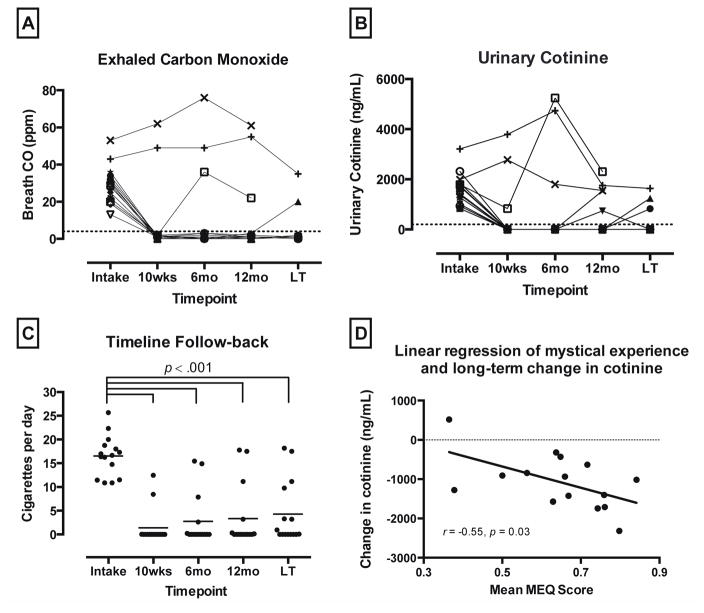Figure 1.
(A) Exhaled carbon monoxide (CO) shown for each participant from baseline through long-term follow-up (LT). (B) Urine cotinine levels shown for each participant from baseline through long-term follow-up. (C) Timeline Follow-back (TLFB) data of self-reported daily smoking; individual data points show individual participant data, with the group mean indicated by horizontal line; horizontal brackets indicate significant reductions between intake and each of 4 follow-up assessments (2-tailed paired t-tests, p < 0.001). (D) Relationship between average scores on the Mystical Experience Questionnaire (MEQ30) at the conclusion of each psilocybin session, and change in urinary cotinine levels from study intake to long-term follow-up. Data points show data from each of the 15 individual participants with best-fit linear regression.

